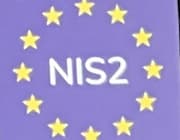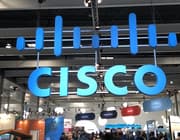Lenovo lanceert tool om Superfish-malware te verwijderen
Lenovo lanceert een oplossing waarmee klanten de malware die het bedrijf enige tijd standaard in de fabriek op laptops installeerden kunnen verwijderen. Lenovo kwam gisteren in het nieuws nadat verschillende klanten op een online forum van Lenovo klaagden over malware die zij op hun nieuwe laptops aantroffen.
Het gaat om de Superfish advertentie en pop-up software. Deze software is volgens Lenovo bedoeld om klanten te helpen bij aankopen. Beveiligingsbedrijven denken hier anders over en zien de software als man-in-the-middle malware. Deze malware kan tussen een gebruiker en een server worden geplaatst, waarna alle data die tussen deze twee punten wordt verzonden wordt onderschept.
Superfish
Superfish is software waarmee advertenties in websites kunnen worden geïnjecteerd, ook als deze websites normaal geen advertenties vertonen. Deze advertenties worden gebaseerd op het surfgedrag van gebruikers. Dit surfgedrag wordt door Superfish dan ook in kaart gebracht. Bij websites die gebruik maken van het HTTPS-protocol is dit echter niet zo maar mogelijk. Superfish geeft daarom zelf SSL-certificaten af voor dit soort websites, waardoor de tool deze beveiliging weet te omzeilen.
Deze laatste truc brengt veel gevaar met zich mee. Zo lijken websites op het eerste oog voorzien te zijn van een legitiem SSL-certificaat en dus veilig te zijn. Bij nadere inspectie blijkt echter dat het certificaat is ondertekend door Superfish, wat weinig garanties voor veiligheid geeft. Ook kwaadaardige websites als phishing-websites, die doorgaans niet over een SSL-certificaat beschikken, kunnen door Superfish van een certificaat worden voorzien.
Verklaring en tool
Lenovo heeft inmiddels een verklaring vrijgegeven waarin het bedrijf de situatie uitlegt. Daarnaast gaf het bedrijf al langer instructies om de software handmatig te verwijderen. Om klanten verder tegemoet te komen is hier nu ook een geautomatiseerde tool voor vrijgegeven. Gebruikers kunnen hiermee de malware van hun laptop verwijderen zonder zelf ingewikkelde stappen te hoeven doorlopen.
Hieronder nog een verklaring van Lenovo:
Updated Lenovo Statement on Superfish
As we said yesterday, Lenovo is exploring every action we can to help our users address the concerns around Superfish. So today we are taking two additional actions:
1. In addition to the manual removal instructions currently available online, we have released an automated tool to help users remove the software and certificate. That tool is here: http://support.lenovo.com/us/en/product_security/superfish_uninstall
2. We are working with McAfee and Microsoft to have the Superfish software and certificate quarantined or removed using their industry-leading tools and technologies. These actions have already started and will automatically fix the vulnerability even for users who are not currently aware of the problem.
We ordered Superfish preloads to stop and had server connections shut down in January based on user complaints about the experience. However, we did not know about this potential security vulnerability until yesterday. Now we are focused on fixing it.
Since that time we have moved as swiftly and decisively as we can based on what we now know. While this issue in no way impacts our ThinkPads; any tablets, desktops or smartphones; or any enterprise server or storage device, we recognize that all Lenovo customers need to be informed. We apologize for causing these concerns among our users – we are learning from this experience and will use it to improve what we do and how we do it in the future. We will continue to take steps to make removal of the software and underlying vulnerable certificates in question easy for customers so they can continue to use our products with the confidence that they expect and deserve.
About Superfish: Superfish technology is purely based on contextual/image and not behavioral. It does not profile nor monitor user behavior. It does not record user information. It does not know who the user is. Users are not tracked nor re-targeted. Every session is independent. Users are given a choice whether or not to use the product. We recognize that the software did not meet expectations and have acted quickly and decisively to remove it from our products.





